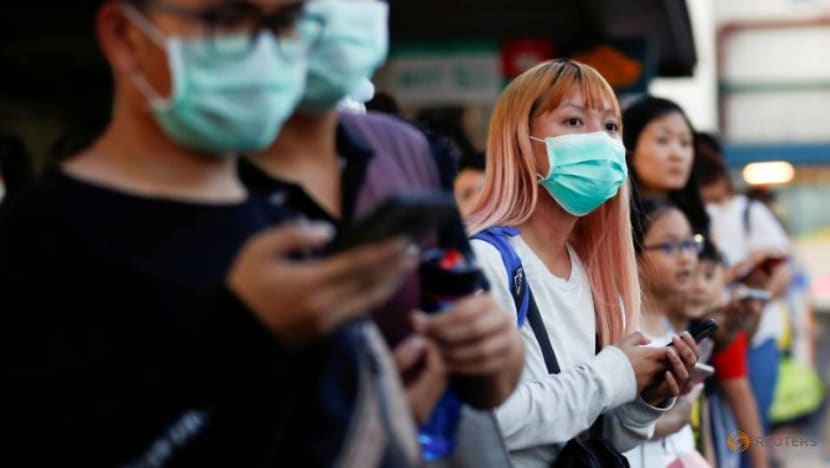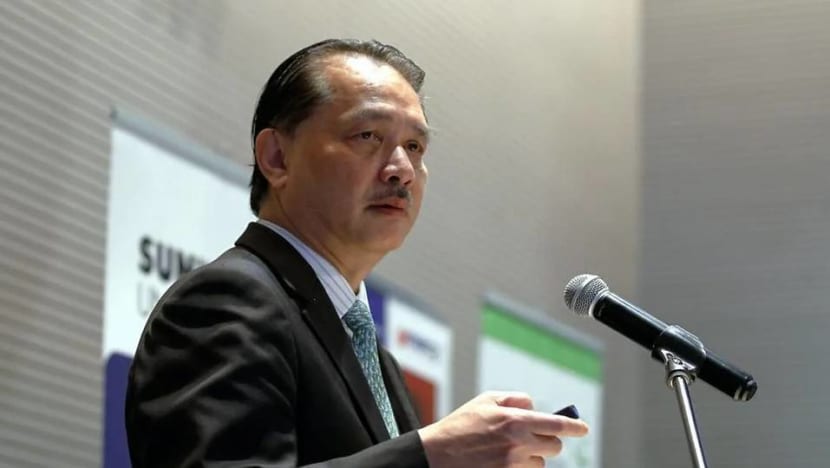commentary Commentary
Commentary: Frustrated with tightened COVID-19 restrictions, Johor residents hope this MCO is the last
With this MCO, Johor residents face a double whammy after coping for months with restrictions on commute to Singapore where many used to earn livelihoods, says Serina Rahman.

FILE PHOTO: Commuters wait for a transport to leave the Woodlands Causeway across to Singapore from Johor, hours before Malaysia imposes a lockdown on travel due to the coronavirus outbreak March 17, 2020. REUTERS/Edgar Su
JOHOR BAHRU: It was déjà vu.
This week, residents of six states scrambled in response to the widely expected news of Malaysia’s reinstatement of Movement Control Orders (MCO) on Monday (Jan 11).
But the bigger shock came from the sudden declaration of a national state of emergency the following day.
For weeks, Malaysians watched as new daily COVID-19 infections climbed to 2,000 and more, in anticipation of fresh curbs but few had expected a full suite of restrictions to kick in so quickly.
The return to the original 10km travel limit and other limitations for Johor, Selangor, Penang, Melaka, Sabah and three federal territories left many wondering whether their businesses and workplaces must shut fully for two weeks.
In the end, the MCO allowed more to function with strict rules and time limits, but the police are promising far harsher enforcement with threats of fines of RM1,000 (US$250) and less leeway for travel beyond 10km.
READ: What you need to know about the state of emergency and tightening COVID-19 curbs in Malaysia
Other states had an MCO with fewer restrictions imposed, but all announcements were initially vague on details.
This might explain the panic-buying the day before. Across the country, long queues filled hypermarkets and petrol stations overflowed with vehicles, as Malaysians readied themselves for a harsh few weeks.
Highways were jammed with last-minute journeys across state lines before the deadline.
In Johor, roads into the city centre were unusually full for the first time since the original MCO restrictions were slapped on in March 2020, as people headed out for a last chance to dine or shop as a group.
On Sunday, prior to the MCO announcement, Deputy-General of Health, Dr Noor Hisham Abdullah had primed the ground, expressing grave concern as he saw 71 COVID-19 deaths in the first nine days of 2021 compared to 100 such fatalities in the preceding nine months.

THE ECONOMIC PAINS
The reimposition of the MCO stirred up fear and despair, after storms in the east coast saw the worst flooding in half a century, leaving at least six dead and 50,000 evacuated.
Kota Tinggi and many neighbourhoods in Johor were submerged for days, even as waters have largely receded.
Most Malaysians are less bothered with the imposition of a national emergency, interpreting the move as a political response to political bickering and incessant demands for snap elections by factions opposed to the prime minister.
The Malaysian economy contracted by 4.6 per cent in 2020, with unemployment edging up to 4.8 per cent in November.
Daily-paid workers and those in non-essential industries have come under the greatest pressures from such lockdown measures, in spite of loosened rules on Employment Provident Fund (EPF) withdrawals and the next Bantuan Prihatin Nasional (BPN) economic stimulus package payout.
READ: Commentary: KL-Singapore HSR termination risks Malaysia falling behind on transport connectivity
READ: Commentary: What struggling Malaysians need from this Budget is a stronger safety net – and higher taxes
Of all Malaysian states, Johor suffered the brunt of COVID-19’s economic impact as closed borders left the city centre empty.
Many businesses, restaurants and hotels dependent on Singaporean customers closed for good as the nation’s border with Singapore remained sealed.
Even the Reciprocal Green Lane (RGL) and Periodic Commuting Arrangement (PCA) were not enough to resuscitate the southernmost state’s economy.
Added to that is the burden of those who used to work in Singapore, but either lost their jobs or elected to return to Malaysia as they could not meet the costs of rent and food in the city-state.
The greatest uncertainty hovers over daily commuters that numbered in the hundreds of thousands prior to the pandemic. As factories and businesses in Malaysia ground to a halt during the first MCO, finding alternative employment was a challenge.

Some who had higher financial commitments dependent on their Singapore-dollar salaries have had to sell off vehicles and homes, others have taken up jobs as food-delivery riders.
My chats with several who opened pop-up food stalls around the Gelang Patah town closest to the Tuas checkpoint inevitably return to their woes in not being able to return to Singapore for work.
RESILIENCE AND RISK
The pandemic has shone the spotlight on how Singapore and Malaysia’s economies are inextricably linked in myriad ways.
READ: IN FOCUS: How COVID-19 has disrupted the close links between Singapore and Johor
LISTEN: What next for Malaysian workers stuck there and Singapore businesses who hire them here?
The reality is until both countries can get their numbers down, there will be limits on travel, exchanges and other interactions long taken for granted, with a disproportionate impact on specific groups of Malaysians.
While the RGL offered respite for businessmen who could travel into Singapore for up to 14 days without quarantine, this benefit was restricted to those in higher income brackets.
The PCA enabled more middle- and low-income workers to return to jobs in Singapore, but required them to find affordable accommodation for 90 days before they can return to Malaysia.
Some had employers who provided accommodation and allowances, but a few I spoke to who worked as cleaners and menial jobs were forced to sleep rough or secretly slept in storerooms.
READ: Commentary: The former Malaysian workers in Singapore caught in limbo in Johor
Even as PCA limitations were eased to allow applications from Malaysians with Singapore permanent residency status this week, quarantine requirements imposed high costs.
Even for Malaysians able to remain in Singapore, the border closures have been especially trying in times of family illness and death.
Families have been separated, including parents of newborns and students who used to commute to schools in either Singapore or Malaysia.
Many elderly parents have also bemoaned their adult children’s inability to return from Singapore.

Entrepreneurial delivery services have mushroomed as parents in Malaysia send cooked food to children in Singapore, and concerned relatives in Singapore send milk powder and other necessities to family members in Malaysia.
A number of services operate by word-of-mouth, piggy-backing on lorry drivers already scheduled to cross the Causeway and recommendations on Facebook groups. They have seen brisk business as restrictions continued.
READ: Commentary: The former Malaysian workers in Singapore caught in limbo in Johor
THE CHANGE IN THE SITUATION END-2020
Resilient Johor residents will find a way to deal with the double whammy of this new MCO. But how did Malaysia get here?
The country seemed to have brought COVID-19 to heel after Muhyiddin was sworn into power, imposed the MCO in March 2020 and calibrated restrictions throughout the year.
But soon after the Sabah state elections and the reopening of state borders, numbers escalated. Media reports traced infection numbers to returning election officials, politicians and staffers who did not abide by quarantine requirements, and growing fatigue with restrictions.
READ: Commentary: Malaysia a kinder and stronger society six months into COVID-19 fight
Many had hoped that 2021 would bring reprieve in the form of a daily commuting arrangement with Singapore. That thought is probably the furthest from anyone’s mind now.
The announcement of MCO reimposition revived nightmares of the total lockdown imposed almost a year ago.
The lack of initial details and cacophony of voices objecting to a national emergency did not help the cloud of uncertainty.
READ: Commentary: A convenient state of emergency amid challenging times in Malaysia
Clearer details only emerged after the release of Malaysia’s National Security Council’s SOPs - at dawn on Wednesday, the first day the MCO takes effect.
Expected u-turns were announced, such as Police Inspector-General Abdul Hamid Bador’s clarification that state residents can return home within the first three days.
The confusion has been compounded by poor past experience, where announced restrictions change by the day, and enforcement was lax and somewhat arbitrary.

Some rules also contradict each other. Commodities and plantation industries can continue functioning but many self-employed deliverers are unsure how to get past roadblocks that restrict travel beyond 10km.
Rural fishing communities, on the edges of Gelang Patah, just across the Tebrau Strait from Tuas, depending on customers to travel well beyond city limits are stranded. No one beyond their immediate villages can reach them to buy their seafood.
The expectation is that the MCO will be extended beyond the two-week period as Prime Minister Muhyiddin Yasin mentioned that gatherings for Thaipusam and Chinese New Year would not be allowed.
The silver lining is that Malaysia has doubled its Pfizer-BioNTech COVID-19 vaccine order this week. But even with the promises of vaccines, the gulf in infection numbers between Malaysia and Singapore will make the return to pre-pandemic cross-border exchanges a distant dream.
Still, Dr Noor Hisham’s announcement that the new lockdown will not be extended beyond four weeks given its economic impact brings hope that this MCO will be the last.
Johor residents certainly wish so.
Listen to Malaysians coping with a new wave of COVID-19 share their very different experiences of living through the pandemic in Johor, Kuala Lumpur and Sabah:
Dr Serina Rahman, Visiting Fellow at the ISEAS-Yusof Ishak Institute, writes from Johor where she’s in lockdown with the rest of Malaysia.















